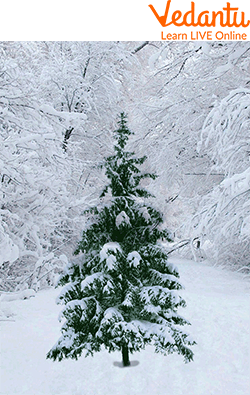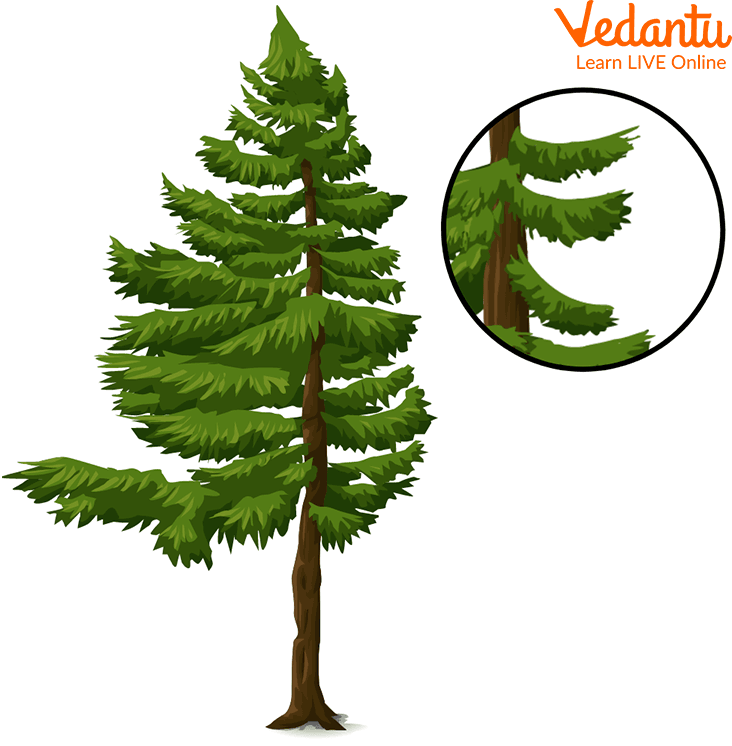




Overview of Plants Found on Mountains with Snow
Have you ever seen those plants which people used to decorate trees on the occasion of Christmas? Have you ever noticed that they have a pointy top and slanting leaves are most commonly found in the snowy region. The regions that tend to get a lot of snowfall and heavy snow storms are the ones that host such plants. Because plants like these are well adapted to survive in such harsh conditions. Some examples are Coneflowers, Lily of the valley, etc. In this article, we will learn about such plants that grow on mountains with snow and will also look at snowy region plants names.

Plant Covered in Snow
Why are Some Plants Called Snow Plants?
Snowy Mountain Plants are also called "snow plants". They grow on mountains and thrive in cold weather, which is why they are called "snow plants". The plants that grow on mountains have adapted to survive in cold environments.
Snowy countries like Japan, Canada, France etc. are the areas that have the snowiest plants. These snowy plants are usually tall and have pointy leaves. It is also a place where people go to enjoy winter sports, but it is not all just fun and games. Many people visit such areas to see the beautiful scenery of the snow-covered mountains with plants scattered around them.
Adaptations in Plants That Grow in Snowy Regions
Most of these plants are present with specialised adaptations that help them to survive in harsh climatic conditions. Those adaptations are -
Their needles are long and thin. This means that they have a small surface area. Less surface area means that they have fewer stomata from which to lose water. Narrow leaves also help keep snow from building up and breaking branches.
Their stomata are not on the surface of the needle, but rather are deep within the needle. This creates a pocket of still air just inside the needle. Still air results in less transpiration than moving air.
Their needles have thick, waxy cuticles. The cuticle is the outermost part of a leaf. The wax helps to prevent water loss. Think of how wax paper wrapped around food keeps it from drying out.
Trees also produce antifreeze proteins. These proteins help prevent ice crystals from forming in cold temperatures.
Types of Plants Found in Mountains with Snow
The plants that are found in the snow are mostly evergreens, like pine trees, spruce trees and cedar trees. They have adapted to survive in harsh conditions like below-freezing temperatures or heavy snowfalls.
The plants found in the snowy regions are also known as mycotrophic due to the absence of chlorophyll in them.
Snowy plants are usually very rare and are protected by law and people are not allowed to pick these plants for their own aesthetics.
No plants found in snowy regions are found to be dangerous for human health.
Snowy Region Plants Names
There are many plants that live in the snowy mountain region which can be used for food, medicine, and other purposes.
The snow region plants names list contains plants that are selected for their ability to withstand cold, wet winters and hot, dry summers.
Snow country plants can be divided into two categories: plants that grow well in winter and plants that live in the snowy mountain region.
The first category includes shrubs, trees, ground cover, and vines. These are the plants that are more likely to survive harsh winters because they have thick bark or high-density leaves.
The second category includes wild flowers and grasses. These are the plants that live in the snowy mountain region because they grow best in cold climates.
Snowy Plants Names List
Below is the snowy region plants names list:
Willows
Mosses
Birches
Pine
Aspen
Spruce
Coral bells
Pansies
Deodar
Oaktree

Plants of Coral Bells

Deodar Tree Showing Conical Body
Summary
In this article, we learned about some plants that grow and have adapted well to live in mountains with snow. These plants are known as snowy region plants. We learned that these can be very useful for decorations, plants, medicines, and furniture also. These plants are specialised with some qualities that make them different from other terrestrial plants like thick leaves and conical body. These plants are hard and used in the manufacture of wooden furniture. Some examples of snow region plants include Tussock grasses and cotton grasses. With this, we would like to end this article. We hope we were easy to understand and were able to clear all your doubts regarding the plants that are found in snowy mountains. If you have any queries you can ask in the comment section.
FAQs on Snowy Region Plants Names
1. Why are plants in deserts and snow different from each other?
This is due to the natural phenomenon of adaptation that helps all the plants and animals living in varied climatic, and geographical regions adapt to the environment surrounding them and ensure their survival in those extreme climatic conditions. In desert plants, the leaves have a thick layer of cuticle and sunken stomata that helps them reduce water loss in heat. Whereas in snowy plants the leaves are pointed, and thick to provide insulation and protection against cold climates.
2. How do needle-like leaves help in the survival of snowy plants?
Needle-like leaves are best suited for survival in snowy regions because they have maximum air resistance that helps to survive snow storms. They also help in the conservation of water and also fight extremely cold temperatures.
3. What are the plants growing in snowy regions called?
As the plants growing in snowy regions are Conical in shape and therefore are named coniferous plants the cone shape of the plant is an adaptation to ensure its survival in extreme conditions in mountains covered in snow.









